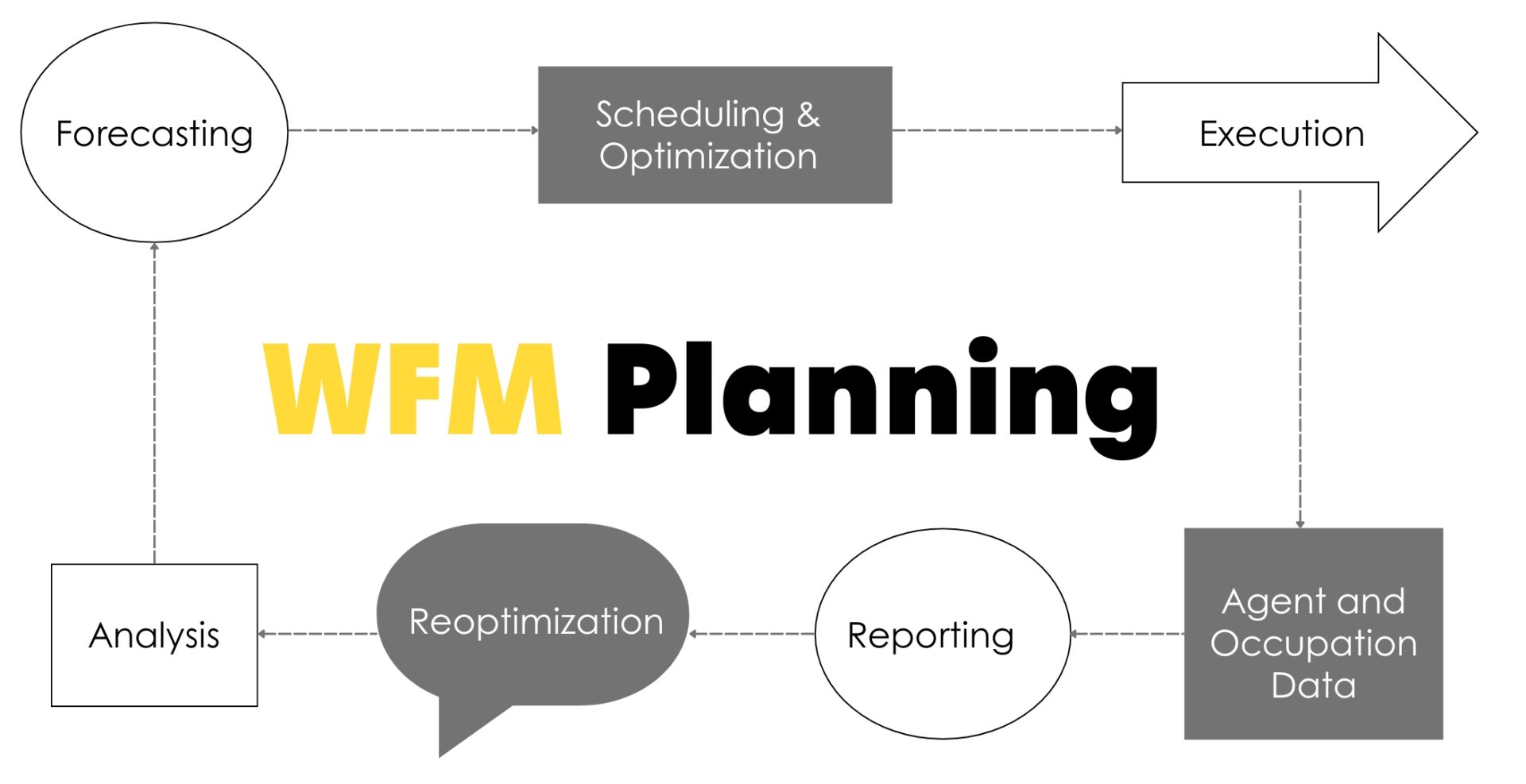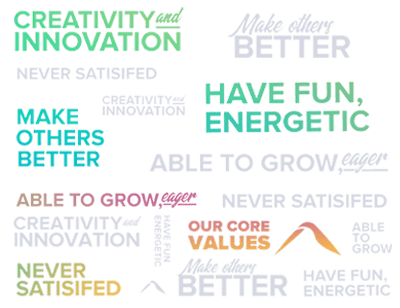Introduction:
When we imagine an exceptional customer experience, the first things that come to mind are helpful and friendly staff, fast issue resolution, and smooth omnichannel support. However, the question here is how these experiences are maintained constantly. The one unnoticed force behind all these efficient and smooth interactions, the cooperative agent and prompt response, is Workforce Management (WFM).
With the workforce management industry projected to reach $31.44 billion by 2034, up from $10.53 billion in 2024[i].workforce management plays a crucial role in ensuring teams are equipped with the necessary information, present, and skilled to deliver a seamless customer experience.
Before moving ahead, let’s first understand what Workforce Management (WFM) is.
Workforce Management encompasses a set of methods used to ensure that the correct number of agents with the required skills are available at the right place and at the right moment.
- Predicting requirement
- Scheduling staff
- Real-time monitoring
- Tracking time and attendance
- Performance analytics
However, workforce Management is generally considered a concern of back-office operations or contact centres, but it has a much wider coverage and impacts from employee engagement to customer journey.

The Link Between WFM and Customer Experience
1. Right People, correct time, genuine result
Finding the connection between WFM and Customer Experience
It’s likely happened to all of us: we have called a service provider, only to be put on hold for 15 minutes, listening to the same monotonous music. Or standing at a store holding a product and being unable to find anyone to help. Naturally, we feel annoyed and neglected, but the issue lies not with the employees themselves, but with flawed workforce planning.
An effective workforce management ensures that the team facing customers is present for assistance and is equipped with all the necessary information.
Which means that:
- High resolution rate
- Lesser wait time
- High first-contact resolution (FCR)
- Satisfied and repeat customers
2. Meeting Demand Without Burning Out Your Staff
Overworked employees cannot lead to satisfied customers. Employee burnout is one of the primary reasons for unsatisfactory customer experiences. Exhausted and overworked employees try to rush the conversations. An efficient workforce management strategy evades these snags and balances the work pressure. Also, employee preferences, timely breaks are considered. The customer engagement improves when employees feel valued and rested, resulting in happy and well-handled customers.
A 15-25% improvement in scheduling is experienced by organizations that use advanced analytics for shift management[ii].
3. Scheduling as per channel
Customers today want you to meet them according to their preferences and preferred channel. Gone are the days when calls were the only option. Today, various channels like SMS, email, and Voice calls are used by customers to reach a company, and they expect seamless experiences across all channels.
Contemporary Workforce Management Solution enable scheduling based on channel proficiency and skills.
- Schedule an agent for voice calls when traffic is low; however, put an agent on live chat during busy hours.
- For handling international tickets, a multilingual agent can be assigned.
- Distribution of tasks is based on experience; new hires are assigned simple tasks, while seasoned ones are given more intricate ones.
4. Real-time monitoring is one of the impeccable features of WFM tools
Managers and supervisors can monitor and keep a watch on:
- Availability of agents
- Observance of schedules
- Metrics of customer satisfaction
- Service Level Agreements (SLAs)
- Queue lengths
In the event of a sudden volume increase or an unpredictable agent absence, new resources can be reassigned promptly. WFM systems will send alerts. This alertness can evade interruptions in service and confirm consistent CX.
5. Decisions based on data enhances performance.
Data is generated after every conversation, schedule, and shift. This data is analysed and turned into actionable insights by the WFM systems. These insights are explored and used to improve results for customers and employee performance.
With intelligent insights, an organization can:
- Recognise shifts that are underachieving
- Identify training requirements for certain agents
- Monitor compliance and promptness
- Augment scheduling approaches for future periods
As per the article” Designing Effective Learning for a Multigenerational Workforce– 77% of employees under 40 and 76% over 40 report low engagement levels, indicating a need for personalized development architectures[iii].
6. The foundation of trust and loyalty- Consistency
Consistency is the rope that keeps customers tied to a company
Customers expect every interaction to be of high quality, regardless of the day or time. Workforce management assists businesses in regulating service delivery by ensuring-
- Correct number of agents
- Staff are effectively skilled and prepared
- Performance standards were reached overall by the board
As per Gallup’s State of the Global Workplace report 50% of workers reported feeling stressed at their jobs every day, and 60% reported being emotionally detached at work[iv].
7. The Unseen ROI of efficient Workforce Management
When seen through the perspective of customer experience, the return on investment of Workforce Management is extensive and proves that it’s more than a regular operational cost.
An efficient workforce management achieves:
- Higher Net Promoter Scores (NPS)
- Reduced customer churn
- Fewer complaints and escalations
- Lower overtime expenses
- Decreased staff attrition
Precisely, workforce management is not just a money saver but also improves revenue.
Wrap up!
We should keep in mind that in the struggle to deliver exceptional customer experiences, technology is significant; however, technology can’t replace people. The workforce of any company is the façade, and managing the quality of the façade decides the eminence of each interaction with the customer. Investing in workforce management today is an integral strategic step and not just an option or choice. A well-managed workforce determines how well you will compete, expand, and thrive in a customer-centric ecosphere.
Read More – Top Workforce Management Trends to Watch in 2025
Frequently Asked Questions On Workforce Management
1. What does Workforce Management (WFM) mean?
Workforce Management encompasses a set of strategies and tools designed to enhance employee productivity.
2. How is Customer Experience influenced by Workforce Management?
WFM ensures that prompt service is offered to the customers by agents who are skilled and well-trained. This promptness results in faster resolution time, tailored service, and enhanced customer experience.
3. The Workforce Management system is composed of which essential elements?
- Predicting requirements
- Scheduling of staff
- Tracking Time and Attendance
- Monitoring performance
- Compliance management
4. Does effective Workforce Management offer any long-term benefits?
- Improved customer loyalty
- Boosted employee engagement
- More elevated operational efficiency
- Scalable service delivery
- Enhanced brand reputation
Sources :
Workforce Management Market Size to Attain USD 31.44 Bn by 2034
Data-Driven Shift Management: Your Competitive Edge
Designing Effective Learning for a Multigenerational Workforce
State of the Global Workplace




